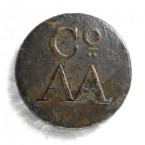The textiles machines are of historic significance as evidence of the transfer of haberdashery and tailoring of clothing from the Italian village to Fairfield in the Australia suburbs. Continue reading
Objects Through Time: clothing
The cape has historical significance as evidence of the experience of women in middle class families in the nineteenth century and of colonial millinery and clothing retail practices. Continue reading
This army kit is of historic significance as the evidence of a strong emotional bond with the Alpini army corps. Continue reading
This clothing collection from Griffith is of historic significance as a transfer of habits of dress from the Italian village to Australia. Continue reading
Discover the record collection of the Griffith Continental Music Club that featured members such as Al Grassby who was the Club’s early radio announcer. Continue reading
These tools of trade of Virginio Davi, who was a boot maker in Griffith in the early 1950s, are historically significant as evidence of a cottage trade transferred to Australia. Continue reading
This collection of knitting machines and tools is of historic significance as a family craft of the Griffith area handed down from mother to daughter, that may be traced back to a sixteenth century tradition in Northern Italy. Continue reading
See the silk wedding gown for Gertrude Pabst who lived in Germanton (later Holbrook) in the 1870s. Continue reading
Discover the Convict Cap dated 1850, two years before convict transportation ended on the east coast of Australia. Continue reading
Discover the long sleeved woollen convict jacket made of ‘Parramatta cloth’, c.1855. Continue reading
This lace collection from Griffith is of historic significance as a family craft handed down from mother to daughter. Continue reading
Discover the brass button from the work clothes of a convict assigned to the Australian Agricultural Company at Newcastle in the 1830s. Continue reading
Discover the 12 string electric guitar Harry Vanda played with the Easybeats during their heyday. The Easybeats are regarded as Australia’s greatest pop band from the 1960s and formed from a group of migrant teenagers living at the Villawood Migrant Hostel.
The bicorn hat has historical value. It was owned by Matthew Flinders, one of the greatest navigators and cartographers in Australian history, and later by the Flinders family.
Continue reading
This lithographic print of King Bungaree attributed to Augustus Earle and dated 1826 is evidence of early interactions between Ruopeans and Aboriginal people. It is a significant object from the State Library of NSW Collection.
Continue reading


